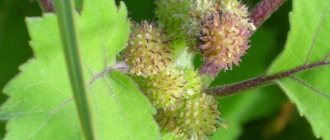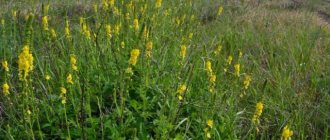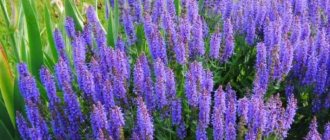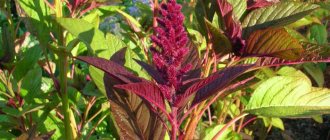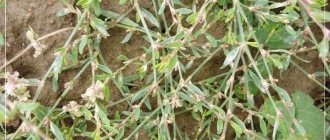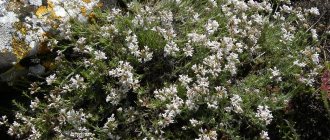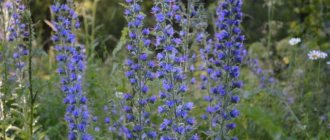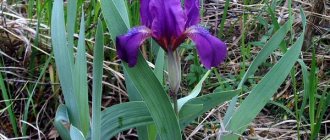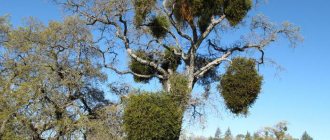The herbaceous perennial kirkazon is a liana that grows wild in tropical, subtropical, and less commonly temperate zones of Asia, Africa, Australia, and Latin America. About 200 species of plants are known, the most common of which are: common or clematis, large-leaved, Manchurian, felt, graceful.
Kirkazon is used in ornamental gardening, often for vertical gardening; it effectively and very elegantly creates beautiful green screens, and quite quickly - under favorable conditions, the vine can grow up to 20 cm per day during the season.
The herb kirkazon has medicinal properties, but it is used only in folk medicine. It contains a significant proportion of toxic substances. People call the poisonous vine differently - feverish, evil or camphor grass, aristocholia, birthing grass, royal beard.
Kirkazon grass description
Not everyone has heard of such a plant as kirkazon. Other names for the herb:
- aristolochia
- camphor tree
- financier
- fever grass
The plant is a woody perennial vine up to 1 meter high. Its external characteristics are as follows:
- creeping rhizome
- stem straight
- round shaped leaves
- the flowers resemble a tube in appearance,
- painted in light yellow tone
- the seeds are small, brown, slightly wrinkled
This is what Kirkazon looks like.
Flowering begins in May and continues until July. In July, the carcass begins to bear fruit. It is noted that the plant has a specific unpleasant odor. This grass grows mainly in places where there is enough moisture in the soil:
- river banks
- meadows
- ravines
Many types of fireweed are grown in gardens and greenhouses as ornamental plants because of their large, bright flowers. Some of its varieties are credited with medicinal properties. The plant contains:
- aristolochic acid
- Magnoflorin
- essential oils
- carotene
- saponin
- various resins
It must be remembered that this herb is poisonous, and upon contact with it, some people may experience an allergic reaction resembling a burn.
Kirkazon clematis - chemical composition
Kirkazon leaves, roots and shoots are distinguished by an increased amount of resins, acids, and essential oils. The plant differs in its content:
- flavonoids;
- alkaloids (aristoloquine, magnoflorine);
- cinnamon alcohol;
- phenolcarboxylic and organic acids;
- bitterness;
- tannins;
- glycosides;
- saponins;
- carotene.
Aristoloquine stimulates the respiratory center, increases heart rate, and has a vasodilator and diuretic effect. Halogen preparations kill bacteria.
Contains toxic substances, but despite this, in small doses it has a unique healing effect.
We advise you to read: Black cumin oil - benefits and harm
Herb and root kirkazon, medicinal properties and contraindications
For treatment with kirkazone the following are used:
- grass
- root
- seeds (rare)
To ensure that the plant does not lose its healing properties, it must be prepared correctly:
- the herbaceous part is collected during flowering . You need to cut the stem from the top by about a third. It must be dried in partial shade, in a well-ventilated place, spread out in one layer
- rhizomes are harvested in the autumn , when the plant's fruits and seeds ripen. The roots are then dug up, thoroughly washed and dried, and the seeds are collected after they have fully ripened.
This plant has many medicinal properties:
- antipyretic
- diaphoretic - diuretic
- anti-inflammatory
- diuretic
- antimicrobial
- antibacterial
Kirkazon has many beneficial properties.
Due to this, finovnik is used for medical purposes:
- expands the amplitude of contraction of the heart muscle
- promotes dilation of blood vessels in the circulatory system
- increases breathing
- Helps lower blood pressure
- heals wounds
- activates the central nervous system
The unique substances contained in this healing herb alleviate the human condition in many painful conditions:
- skin
- gynecological
- gastrointestinal
- venous-vascular
- colds
However, along with its medicinal properties, due to its composition, Kirkazone has a number of serious contraindications. It is strictly forbidden to use this herb:
- children
- pregnant women
- suffering from gastritis
- for renal and liver failure
Pregnant women and children are prohibited from consuming the plant.
In addition, treatment with drugs containing this plant is carried out strictly under medical supervision.
Procurement of raw materials
Kirkazon roots and grass are harvested. Given the toxicity of the plant, this work must be done with gloves. The roots are dug up after the seeds are completely ripe. They are cleaned, washed thoroughly and dried in the sun. The grass is collected during the flowering of the vine, cutting off the apical parts up to 0.3 m long. Lay out under a canopy and dry until ready. Dried raw materials are stored in paper containers for no more than 3 years.
The use of folk recipes from plant materials can effectively treat many diseases. However, it is impossible to do without the help of doctors. Firstly, you need to know your diagnosis accurately, and secondly, before using herbal preparations, you need professional advice, otherwise irreparable harm can be caused to the body.
Source
Kirkazon: application in gynecology
Kirkazon has long been used to treat gynecological diseases. It is noteworthy that Aristolochia (the second name of the plant) comes from the Greek words “best” and “birth”. In ancient times, this herb was often used for postpartum cleansing.
Finovnik is used as a gynecological remedy in the following cases:
- absence or delay of menstruation
- inflammation and irritation of the mucous membrane
- discharge caused by the presence of various fungal infections
- initial stage of intrauterine tumors
This remedy is recommended for the treatment of:
- polyps
- endometriosis
- cyst
- cervical erosion
- fibroids
For female diseases, use kirkaazon.
For nursing mothers, the medicinal vine helps:
- increase lactation
- prevent mastitis
Aristolochia is used to treat “female” diseases:
- in the form of a decoction (2 teaspoons per 0.6 liters of boiling water), which is taken 2 tablespoons three times a day)
- in the form of an infusion for douching (included in gynecological preparations)
Kirkazon increases lactation.
During pregnancy, using this drug is strictly prohibited, as it can cause miscarriage or premature birth.
Kirkazon for endometriosis: recipe
Often, for the treatment of endometriosis, or endometrial hyperplasia, experts recommend using the herb kirkazon. According to numerous reviews from women, this drug helped them overcome the disease without surgery.
In order to eliminate the disease, the medicinal vine is used as a decoction for douching. It is prepared as follows, ingredients:
- 3 tbsp. l. aristolochia
- 1 tbsp. l. celandine (stems)
- 1 liter of water
Preparation:
- pour boiling water over the grass
- let it brew for a few hours
- strain
Douching with a medicinal decoction at room temperature must be done quite intensely; before bedtime it will be better. The procedure is carried out daily for 10 days in a row. Then you need to take the same break. Repeat if necessary. In some cases, women noted that after completing a course of douching, even the advanced stage of endometriosis was cured.
For endometriosis, also use Kirkazone
In addition, for the treatment of endometriotic ovarian cysts, a tincture based on Kirkazon is recommended:
- 100 g of plant seeds pour 0.5 liters of vodka
- leave for 10 days
- Dilute 20 ml of the prepared tincture with a glass of water
- take the resulting medicine 100 ml before meals (about an hour) for two weeks
The use of Kirkazon in folk medicine: recipes
According to ancient sources, fever herb (kirkazon) was widely used for medicinal purposes around the world:
- in Europe it was used to heal wounds, treat skin lesions, and improve immunity
- in Africa, infusions based on it were used to smear snake bites as an antidote
- in China the herb was used for malignant tumors
- in America the drug was used for gastrointestinal ailments
This healing plant is still used today. Based on Kirkazon, folk healers make various medicinal products. Infusions for internal use (depending on the disease, they are prepared in various ways):
- for chronic cough, dropsy, tuberculosis, hypertension - 1 tsp. pour 1 tbsp. cooled boiled water, leave to steep for 8-9 hours. Strain, dilute with water to the same volume. Take a quarter cup three times a day after meals
- for colds, migraines, stomach and intestinal disorders - 0.5 tsp. Pour boiling water (1 cup) over the leaves and cook over low heat for about 15 minutes. Cool and strain. Drink 1 tbsp three times a day
- for neuroses, insomnia, stuttering - 1 tsp. herbs pour 0.5 liters of water. Let it brew for 8-10 hours. Take a teaspoon before meals (3-4 r per day)
- against fever, myositis - 1 tbsp. pour 1 liter of boiling water over the rhizomes. Heat for about 10 minutes. Let stand for half an hour. Drink a glass twice a day
- water infusions for external use (used in the treatment of purulent and difficult-to-heal wounds, furunculosis and scrofula) - 1 tsp. roots or stems, brew a glass of boiling water. Using a water bath, cook for 15-20 minutes. Let it brew for about half an hour, strain. Dilute with water to the original volume. Soak gauze in the liquid and apply a compress to the affected areas
- medicinal baths (treat skin rashes, eczema, salt deposits, rheumatism) - pour the root (3 tsp) with boiling water (600 ml), boil for 10 minutes and strain. Pour into the bath. It needs to be taken for 15 – 20 minutes
- alcohol tincture (relieves the condition in the presence of cystitis and dropsy) - 1 tsp of herb, pour 1 tbsp. vodka or diluted alcohol. Keep in the closet for a week. You need to take 20 drops three times a day. Shake before use
- ointment (used to heal wounds and skin irritations) - mix 100 g of stem or leaves and 0.5 liters of pork fat, cook for 2 hours using a water bath. Keep it cold. Rub into affected areas of skin twice during the day.
- powder (has a laxative effect) - mix a spoonful of herb powder with wine and let it brew for 5 hours
In various forms, Kirkazone is used in folk medicine.
However, do not forget that the thoughtless use of Kirkazone can be harmful to health. Therefore, you can use these methods only after consulting a doctor.
Collection and preparation of Kirkazon libriforms
For medicinal purposes, the above-ground and underground parts of the plant are collected.
At the peak of flowering, the stems and leaves are cut off, and the roots are dug up in the fall. The upper leaf part is dried flat in a well-ventilated area, laid out freely, turning over periodically. Avoid exposure to direct sunlight.
The excavated underground part is washed in cold water and dried at 60 ° C. Kirkazon is stored for no more than two years in a dry room in a closed container.
Kirkazon herb for psoriasis: recipe
Psoriasis is a chronic disease that causes spots, rashes and other lesions to form on the skin. Kirkazon has long been used to alleviate the human condition with this disease. The unique pharmacological features of the plant have a beneficial effect on patients with psoriasis:
- contribute to the normalization of the functioning of the nervous system
- cleanse the blood
- have anti-inflammatory characteristics
- have antibacterial properties
- have an analgesic effect
The drug is used both externally and orally. However, according to experts, a greater effect is achieved when using the plant externally:
- lotions - prepare a decoction of 2-3 tablespoons of herb or kirkazon root and 2 cups of boiling water. Cool and wash the wounds with the mixture.
- compresses - infuse 1 tablespoon of herb in 1 glass of boiled water. Soak a cotton or gauze swab in the infusion, apply to the affected area and wrap with film. After 2 hours, rinse without detergent
- medicinal baths - pour 0.5 liters of the prepared decoction from the rhizome of Aristolochia into the bath. Immerse for 15 minutes. No need to rinse off
- rubbing with tincture - prepare a tincture from the herb and alcohol. Wipe the affected areas. However, remember that this product may have side effects, so test on a small area of skin first. Children should not use this tincture.
- ointments - mix 4 tablespoons of comfrey tincture and 2 tablespoons of kirkazon tincture with a glass of melted pork fat. Lubricate wounds daily. But first, just like in the previous case, carry out a test
A bath with kirkazon is healing for psoriasis.
We remind you that consulting a doctor before using this plant to treat psoriasis is mandatory, since determining the exact dosage is the key to preventing negative consequences.
Composition, beneficial properties
Herbal products are used both internally and externally. The widespread use of the perennial is due to its rich composition, as well as many healing properties. The plant is endowed with the following substances:
- fatty oil;
- organic acids;
- essential oil;
- flavonoids;
- alkaloids;
- cinnamon alcohol;
- phenolcarboxylic acids;
- bitterness;
- tannins;
- glycosides;
- saponins;
- resins;
- carotene;
- aristolochic acid.
Thanks to numerous studies, the following properties are known: anti-inflammatory, restorative, immunostimulating, antimicrobial, expectorant, analgesic, wound-healing, tonic, choleretic, diuretic.
The use of products based on herbaceous vines promotes:
- increasing the strength of heart contractions;
- restoration of the correct heart rhythm;
- dilation of blood vessels;
- normalization of the functioning of the kidneys and urinary system;
- cleansing the body of toxic substances and waste;
- fight against pathogenic microflora;
- accelerating the wound healing process;
- normalization of the functioning of the gastrointestinal tract;
- combating painful sensations;
- minimizing inflammatory processes;
- increasing the protective properties of the body.
Article on the topic: Gladiolus imbricata - beneficial properties, description
Kirkazone preparations are effective in the fight against such pathological conditions, diseases: epilepsy, insomnia, neurasthenia, VSD, fatigue, endometriosis, thrombophlebitis, fibroids, polyps, cysts, dermatitis, scabies, itchy skin, psoriasis, gout, hypertension.
Use in alternative medicine: recipes
In the collection of alternative medicine there are many recipes for medicines based on kirkazone. The drugs are effective and will help cure a specific disease. But for this, maximum care should be taken when preparing the compositions - adhere to proportions and doses. The plant is poisonous and if used inappropriately, it can lead to unpredictable consequences.
Before you start taking this or that drug, you should make sure that there are no contraindications, and also consult your doctor.
You should not self-medicate or replace medications with fever herb remedies.
Treatment must be comprehensive. This is the only way you will be able to get rid of the disease in the shortest possible time.
- In the fight against pathologies of the skin of an infectious, viral, fungal nature, inflammatory diseases, purulent wounds, it is recommended to use such a decoction. Brew 30 g of dried crushed herb with boiled water - 300 ml. Boil the composition, after boiling, over low heat for a quarter of an hour. Use the filtered decoction for compresses, washes, and lotions.
- For pathologies associated with salt deposition, metabolic disorders - gout, osteochondrosis, rheumatism, it is useful to take healing baths. Steam 30 g of the plant with boiling water - 500 ml. Place in a warm place for a quarter of an hour. Filter the product and pour it into the bath. The duration of the procedure is 20 minutes. You need to take a bath once a day.
- To strengthen the immune system, eliminate insomnia, minimize pain, normalize the gastrointestinal tract, as well as for the treatment of long-term non-healing wounds, it is recommended to use the tincture. Pour dry crushed rhizomes with 70% alcohol in a ratio of 1:3. Place the tightly closed container in a cool place for three weeks. Filter, take twenty drops three times a day.
- People suffering from coxarthrosis can try using the ointment. Mix 200 g of melted pork fat with tincture of Kirkazon - 20 ml, tincture of comfrey - 40 ml. Use to treat affected areas.
- For ailments, fatigue, and sleep disorders, it is useful to take the infusion. Brew 10 g of dry crushed rhizomes with boiling water - 300 ml. Place in a warm place for nine hours. Filter, take a quarter glass three times a day.
Use in medicine, for decorative purposes
Kirkazon is not a pharmacopoeial plant, therefore it is not used in traditional medicine. But smolnyak has found wide use in alternative medicine and homeopathy. For therapeutic and preventive purposes, both the above-ground and underground parts are used. Infusions and tinctures of the herb are effective in the treatment of intestinal atony, scurvy, gout, dropsy, and tuberculosis.
The plant is valued by gardeners. It is used as an ornamental plant for vertical gardening. In order for a liana to take root well and grow, it needs clayey, organic-rich, well-drained soil.
Botanical description
Kirkazon is a herbaceous perennial belonging to the Kirkazon family, reaching a height of 80 or more centimeters.
The herbaceous liana is endowed with a creeping rhizome, an erect, slightly twisting light green stem, large round or ovoid matte green long-petioled leaves with an unpleasant aroma.
The edges of the leaves are jagged and somewhat rough.
The flowers of the plant are yellow, located in the axils of the leaves, several in number. Flowering occurs at the end of the summer period, and fruit ripening occurs at the beginning of autumn. The fruit of fever grass is a hanging, six-locular pear-shaped capsule with finely wrinkled brownish triangular seeds.
Summer cottages, vegetable gardens, banks of rivers, lakes, water meadows, thickets of bushes, shady damp places, forests - places of growth. Europe, North America, Belarus, Ukraine, Russia, North Caucasus - habitat.
Article on the topic: Water lily - beneficial properties, description
Collection, preparation, storage of medicinal raw materials
For the manufacture of means for therapy and disease prevention, both above-ground and underground parts are used. It is recommended to collect rhizomes after the seeds have ripened. After digging, they must be cleared of soil, washed, and then dried outside.
The above-ground part should be collected during the period of intense flowering. The collected raw materials are dried outside in the shade or in a room with good ventilation. The prepared parts are placed in paper bags or cardboard boxes and then stored in a dry place.
Since the grass is poisonous, gloves should be worn when harvesting it.
Contraindications
Kirkazon is a poisonous plant. Even accidental contact of grass with skin is fraught with a severe allergic reaction and burn. It is for this reason that it is necessary to wear gloves when working with the plant.
The use of formulations based on herbaceous vines is contraindicated for women during pregnancy, breastfeeding, and young children. The herb should not be used for medicinal purposes by people suffering from individual intolerance, gastritis, acute inflammation in the gastrointestinal tract, kidney or liver failure.
Inappropriate use of drugs, exceeding proportions, doses are fraught with menorrhagia, hemorrhagic nephritis, and pathologies of the gastrointestinal tract. Be vigilant, remember, your health is in your hands.
Kirkazon herb for cancer: recipe
According to some different sources, Kirkazone can be used to treat cancer. In folk medicine of Korea and China, this plant is used as an antitumor agent. It should be noted that there is no scientific evidence of a positive effect in the treatment of cancer with aristolochia. However, many traditional healers claim that the use of tinctures and decoctions from this vine leads to relief from a terrible illness:
- infusion for ovarian cancer - dry herbs (1 tbsp each of kirkazona and celandine herbs, blue cornflower petals, 2 tbsp hemlock) pour boiling water (1 l), cool and add 1 tbsp. drug befungin. Apply the product through enemas (make 2 times of 400 and 150 ml). Take the rest gradually, a teaspoon each day, with freshly squeezed carrot juice.
- remedy for metastases - crushed rhizome of kirkazon (1/2 tbsp.), honey (1 tbsp.), sour cream (2 tsp.), chilled water (3 l.) are mixed and infused in a dark place for about a week. You need to drink 0.1 liter 15-20 minutes before meals
- baths to relieve melanoma - an herbal infusion prepared in the usual way is added to the bath and taken for 15 or 20 minutes
Kirkazon helps overcome cancer
Please note that these recommendations are based only on reviews from people and are not confirmed by official medicine.
Growing and care
To grow kirkazona in the garden, you will need fertile forest-type soil containing organic matter and sufficiently breathable. It is advisable that humidity be maintained constantly, otherwise the leaves will droop. However, after the spill they quickly recover. The best option for placing the vine would be partial shade, protected from harsh winds. The plant can be propagated by layering, cuttings, seeds and dividing the bush.
The easiest way to propagate Aristocholia is by layering. To do this, the lower branches must be pinned to the ground and sprinkled with loose soil. The bark is cut, not reaching the wood, and treated with a root formation stimulator (for example, kornevin). After a year or two, the cuttings can be transplanted to a new location.
With the seed method, in the fall, ripened seeds are sown in a furrow 1-3 cm deep, covered with loose soil, humus or compost with soil. In winter, the seeds undergo natural stratification and shoots appear by summer. In the first year, roots develop, the above-ground part grows only 20-50 cm. After 2-3 years, the seedlings can be transplanted to a permanent place, shortening the roots by 30%.
The liana needs regular watering and fertilizing with liquid organic fertilizers - 2-3 times per season. You also need to promptly remove weeds and loosen the soil. Pruning should also be done regularly, removing dead and unsightly branches and limiting growth. In regions with cold winters, bushes must be removed from their supports, pruned, branches laid on the ground and covered with covering material.
Negative properties of Kirkazone
Given the range of positive medicinal properties that this plant has, it should be noted that its use can lead to irreversible consequences. There is a known case when in the middle of the last century in some areas of the Balkans, kirkazon seeds got into the grain harvest, from the flour of which bread was baked.
Many people who consumed it subsequently suffered from kidney failure and malignant tumors. According to doctors, uncontrolled use of Kirkazone can lead to paralysis of the respiratory tract , which is likely to result in death.
Research has also shown that aristolochic acid contained in the plant, which is recognized as a strong carcinogen, leads to cell mutations and can cause cancer of the genitourinary system. In Russia, Europe and America, the import and sale of dietary supplements based on this herb is prohibited.
Contraindications
Despite its medicinal properties, kirkazone is a poisonous plant due to its content of aristolochic acid. Therefore, you should carefully read the dosage of the product based on this herb. An overdose threatens destruction of the mucous membrane of the stomach and intestines. Contact with the plant can result in allergic manifestations, which are similar to chemical burns of 1st or 2nd degree.
Children are strictly prohibited from taking decoctions and infusions prepared on the basis of this herb. The plant should not be used for treatment by pregnant women, as well as people suffering from liver and kidney failure. Patients with gastritis are also not recommended to use the herb. Treatment with Kirkazone is carried out exclusively under the supervision of medical professionals.
Despite its medicinal properties, the plant can cause harm to the human body. Therefore, before starting therapy, it is recommended to consult a doctor. Only he can approve or prohibit the use of Kirkazone, as well as prescribe the required dosages, focusing on the individual characteristics of the patient’s body. Otherwise, instead of treatment, you can get a lot of complications.
Kirkazon is a perennial herbaceous plant that can grow up to 50 cm in height. It has a creeping rhizome and an erect stem, and it emits a specific smell. It produces petiolate, heart-shaped leaves. Like many other perennial plants, kirkazon is valued for its healing properties.
